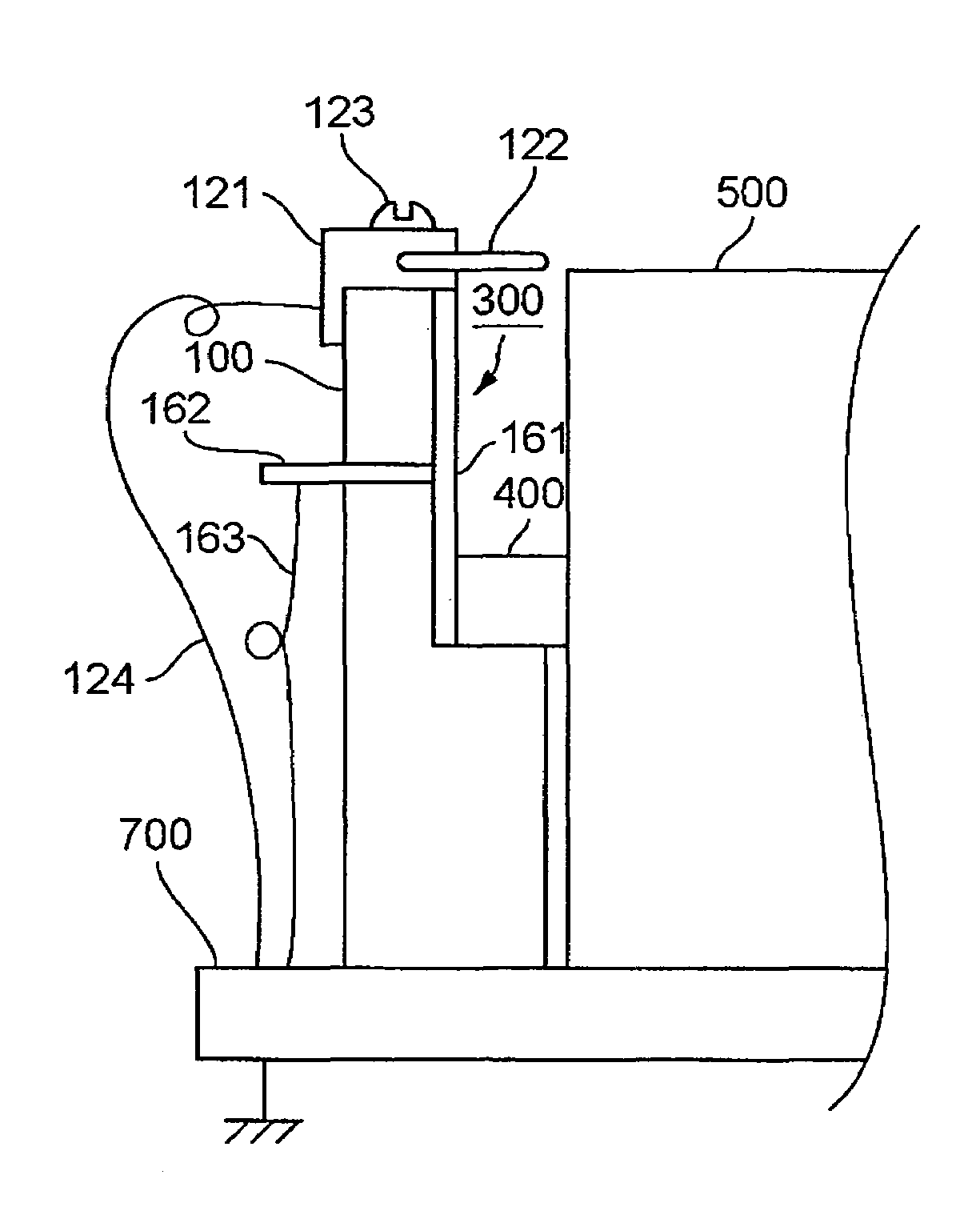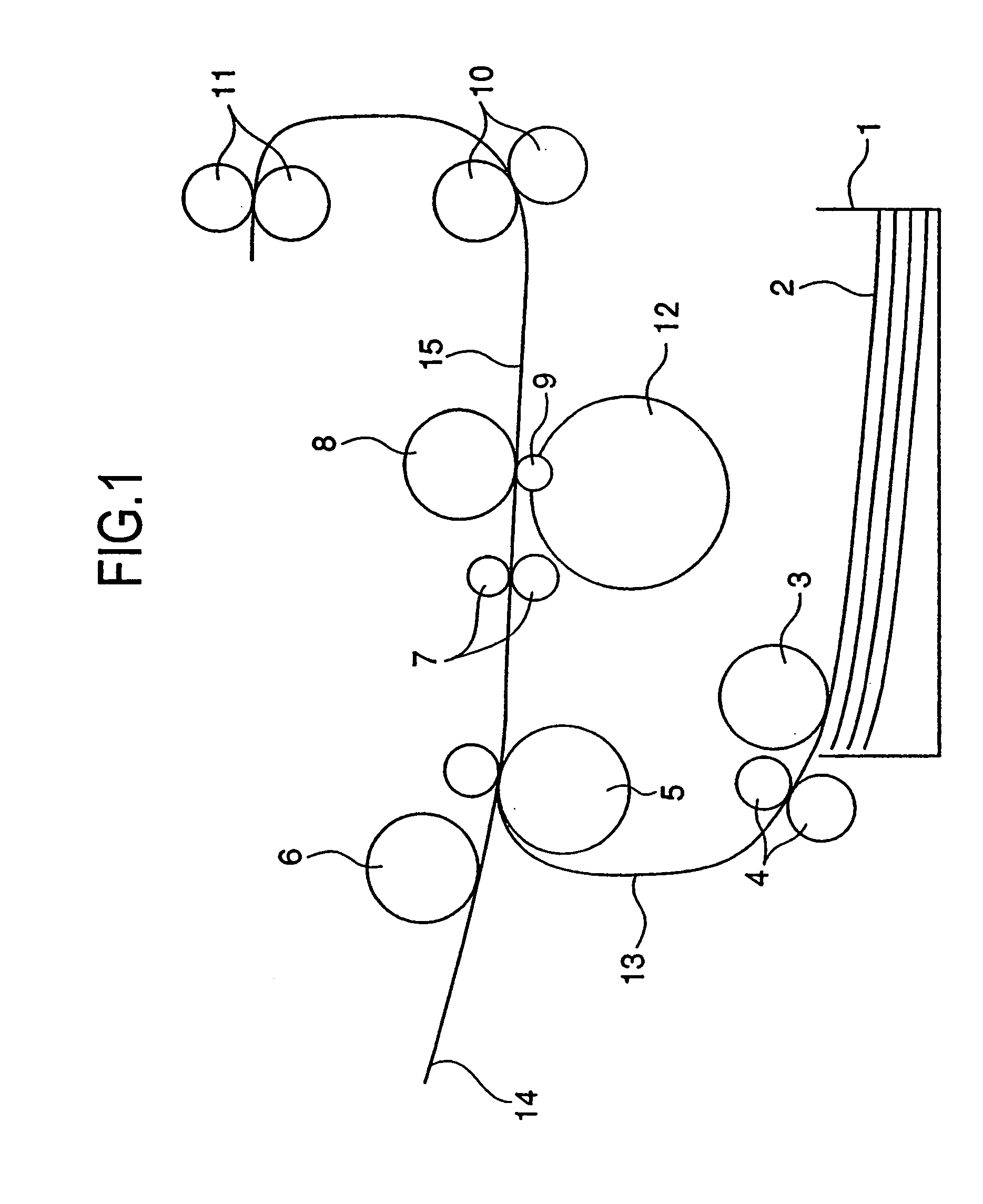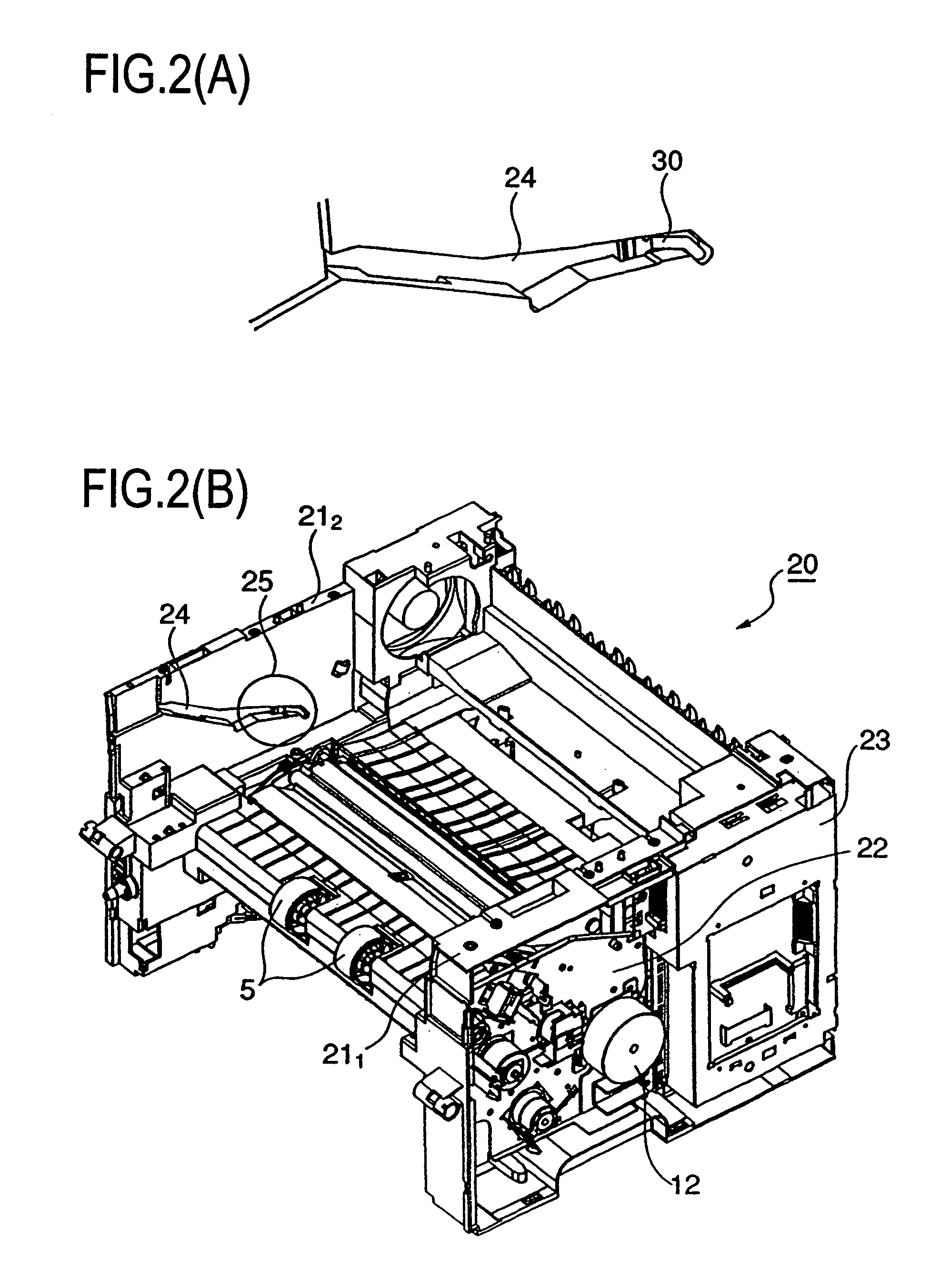Detachable process unit including a charge elimination mechanism
a technology of charge elimination mechanism and process unit, which is applied in the field of image forming machines, can solve the problem of very weak noise due to discharg
- Summary
- Abstract
- Description
- Claims
- Application Information
AI Technical Summary
Benefits of technology
Problems solved by technology
Method used
Image
Examples
first embodiment
[0034]In FIG. 3FIG. 6, reference numeral 40 is the charge eliminating brush as a charge eliminating member of the first embodiment for allowing the electric charge accumulated on the image carrier device 8 in the image forming machine of the present invention to be corona-discharged, 41 is a brush holder, 42 are brush ears made of conductive thin strings or threads shaped, for example, by extruding the mixture of resin and copper powder. As to the conductive thin string or thread, the one made of polycarbonate thin string or thread coated with copper sulfide, the volume specific resistance of the thin string or thread being 1˜0.01 Ω·cm, which is available as the product name of Thunderon produced by TSUCHIYA TSCO COMPANY, Ltd., can be used, and any other products having the same effect may be used. Reference numeral 43 is a gear attached to the shaft of the motor 12, 44 is a gear for driving the process unit. Referring to FIG. 7, reference numeral 60 is an example of a process unit ...
second embodiment
[0044]The charge eliminating member (ground plate) 70 of leaf spring shape of the second embodiment shown in FIG. 8 has a crest part 72, a hole 73 for attaching the member to the drive plate 22 by means of a tightening vis, etc., an end part 71 for inserting in a slit or hole 75 provided in the drive plate 22, and a claw part 74 for inserting in a slit or hole 76 provided in the drive plate 22. The member 70 is attached to the drive plate 22 as shown in FIG. 8(B) by inserting the claw part 74 in the slit or hole 76, inserting the end part 71 in the slit or hole 75, and tightening the vis. When the drive plate 22 is attached to the base frame 211, the ground plate 70 protrudes in the guide groove 26 as shown in FIG. 9. When the process unit 60 is attached to or detached from the machine body 20, the conductive shaft 61 of the process unit 60 can smoothly passes over the crest part 72 of the ground plate 70 because the crest part 72 is pushed by the end face of the conductive shaft 61...
fifth embodiment
[0060]Although the discharge of the process unit by the three kinds of discharge members (discharge brush 122, bent metal spring plate 125 and metal mesh 126) were explained, there are several modifications for the The discharge member may be provided on at least one of the side plates. Further, the conductive axis or electrical conductive shaft may be a rotating or fixed axis of the photoreceptor drum.
[0061]The rotating axis is fixed and unified with the photoreceptor drum (conductive cylinder substrate of the photoreceptor) by using a conductive flange between them. The end surface of the rotating axis contacts the conductive member 161 in the guide groove 300, thereby grounding the inner surface of the conductive cylinder substrate. Further, the rotating axis is extracted from the inside of the process unit 500 through a sliding bearing made of, e.g., polyacetal resin.
[0062]On the other hand, the fixed axis is sliding through a metallic spring plate on a rotating conductive flan...
PUM
 Login to View More
Login to View More Abstract
Description
Claims
Application Information
 Login to View More
Login to View More - R&D
- Intellectual Property
- Life Sciences
- Materials
- Tech Scout
- Unparalleled Data Quality
- Higher Quality Content
- 60% Fewer Hallucinations
Browse by: Latest US Patents, China's latest patents, Technical Efficacy Thesaurus, Application Domain, Technology Topic, Popular Technical Reports.
© 2025 PatSnap. All rights reserved.Legal|Privacy policy|Modern Slavery Act Transparency Statement|Sitemap|About US| Contact US: help@patsnap.com



